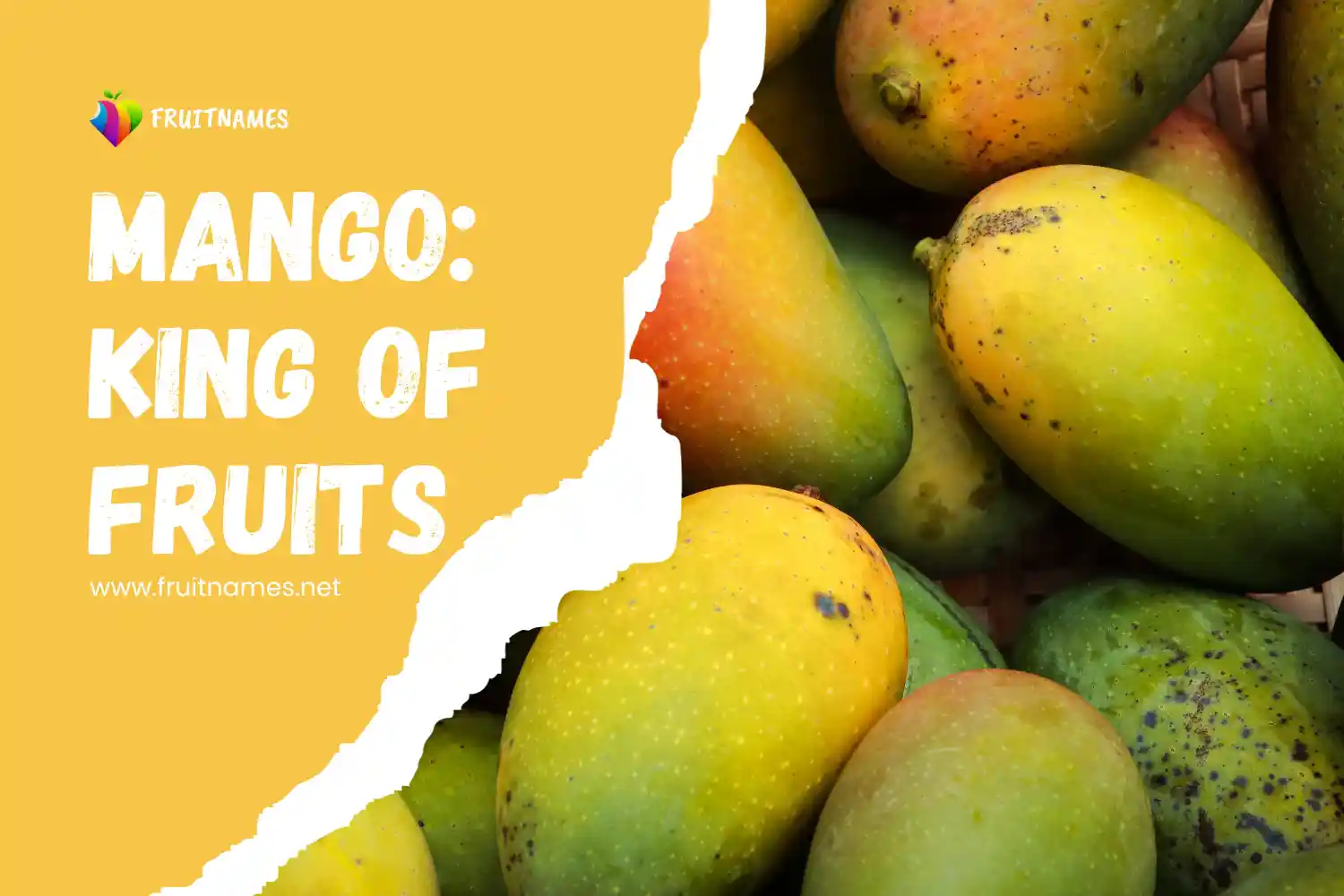Step aside, fruits names of the orchard there’s a regal contender in town, and it goes by the name of Mango! Heralded as the “King of Fruits,” the mango is not just a tropical delight; it’s a symbol of lusciousness, and sweetness, and a sure-fire way to elevate your taste buds to royalty.
With its golden hues and succulent flesh, the mango reigns supreme in the fruit kingdom, captivating hearts and taste buds across the globe. As we embark on a journey into the world of this regal fruit, let’s unravel the reasons behind its majestic title, explore the diverse varieties it boasts, and discover why, for many, a summer without mango is no summer at all.
So, get ready to delve into the realm of the mango the undisputed monarch that turns any ordinary moment into a feast fit for royalty! 🥭👑
10 Fruits Name In English And Hindi
| Serial Number | Fruits Picture | English Fruits Name | Hindi Fruits Name |
| 1 |  | Mango | आम |
| 2 |  | Banana | केला |
| 3 |  | Apple | सेब |
| 4 |  | Orange | संतरा |
| 5 | 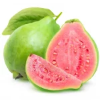 | Guava | अमरूद |
| 6 |  | Pineapple | अनानास |
| 7 | 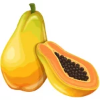 | Papaya | पपीता |
| 8 | 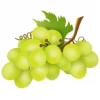 | Grapes | अंगूर |
| 9 |  | Watermelon | तरबूज |
| 10 | 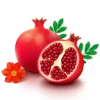 | Pomegranate | अनार |
Benefits of the King of Fruits – Mango
Mangoes aren’t just delicious; they come packed with a plethora of benefits that make them truly deserving of their title as the “King of Fruits.” Let’s explore the royal goodness that mangoes bring to the table:
- Rich in Nutrients: Mangoes are a powerhouse of essential vitamins and minerals, including vitamin C, vitamin A, potassium, and folate, contributing to overall health and well-being.
- Boosts Immunity: The high vitamin C content in mangoes supports a robust immune system, helping the body fend off illnesses and infections.
- Promotes Eye Health: Loaded with vitamin A and antioxidants, mangoes contribute to maintaining good eyesight and preventing age-related macular degeneration.
- Aids Digestion: Mangoes contain enzymes like amylases, which assist in breaking down and assimilating carbohydrates. The fibre content also promotes a healthy digestive system.
- Natural Energizer: The fructose and glucose in mangoes provide a quick energy boost, making them an excellent snack option for an instant pick-me-up.
- Supports Heart Health: Potassium, found abundantly in mangoes, helps regulate blood pressure levels, reducing the risk of cardiovascular diseases.
- Skin Hydration and Glow: Mangoes are a source of beta-carotene and vitamin C, promoting collagen production for youthful skin, while the water content helps keep the skin hydrated.
- Alkalizes the Body: Despite its sweetness, mangoes have an alkalizing effect on the body, helping to balance pH levels and reduce acidity.
- Improves Memory and Concentration: The glutamine acid content in mangoes has been linked to improved memory and increased concentration levels.
- Anti-Inflammatory Properties: The antioxidants in mangoes, such as quercetin, isoquercitrin, astragalin, and fisetin, possess anti-inflammatory properties that may help alleviate inflammatory conditions.
History Of The King Of Fruits
The history of the “King of Fruits,” the mango, is as vibrant as its flavour. Let’s journey through time to explore the fascinating history behind this regal fruit:
1. Origins in South Asia
The mango (Mangifera indica) is believed to have originated over 4,000 years ago in South Asia, possibly in present-day Eastern India and Myanmar. Its cultivation spread to other parts of Southeast Asia and eventually reached Africa.
2. Cultural Significance
Mangoes have played a significant role in the cultures of South Asia for centuries. In Hinduism, the mango is considered a sacred fruit, symbolizing love and fertility. The fruit also finds mention in ancient Indian scriptures and poetry, highlighting its cultural importance.
3. Spread to the Middle East and Beyond
Around 300 or 400 A.D., Persian traders are thought to have introduced mango cultivation to the Middle East. From there, it made its way to other regions, including Africa and the Mediterranean.
4. Arrival in the Americas
The Portuguese explorers are credited with introducing mangoes to the Americas in the late 15th century. They brought the fruit to Brazil, and from there, it spread to other parts of the continent. Mango cultivation flourished in tropical and subtropical regions, thriving in places like Mexico, the Caribbean, and Florida.
5. Varied Varieties and Global Appeal
As the centuries passed, mangoes underwent natural cross-breeding, resulting in a vast array of varieties with distinct flavours, sizes, and colours. Today, the fruit is cultivated in tropical and subtropical regions worldwide, with India, China, Thailand, Indonesia, and the Philippines being among the top producers.
6. Global Trade and Commerce
Mangoes became a global commodity, with international trade playing a crucial role in their dissemination. The fruit’s popularity led to its inclusion in various cuisines, and it became a symbol of tropical indulgence in many parts of the world.
7. Modern Production and Innovation
In the modern era, advancements in agricultural practices, transportation, and storage have further boosted the global availability of mangoes. The fruit has become a staple in diverse culinary traditions, featuring in everything from salads and salsas to desserts and beverages.
Today, the mango stands not only as a delectable fruit but as a symbol of cultural heritage, global interconnectedness, and the sweet passage of time. Its journey from ancient South Asia to becoming a beloved fruit worldwide is a testament to the enduring allure of the “King of Fruits.” 🌍
Exploring the Luscious World of Mango Varieties
Mangoes come in a diverse array of varieties, each with its unique flavour, texture, and appearance. Numerous cultivars of mangoes are cultivated in various parts of the world, and their availability depends on the geographical region and climate. Here are descriptions of some popular varieties of mangoes:
1. Alphonso (Hapus):
- Known as the “King of Mangoes.”
- Origin: India, particularly in the Ratnagiri region.
- Characteristics: Rich, creamy texture, intense sweetness, and a distinctive aroma.
2. Tommy Atkins:
- One of the most widely grown commercial varieties.
- Origin: Florida, USA.
- Characteristics: Fibrous texture, mildly sweet, and a mild peachy flavour.
3. Kent:
- Popular for its large size and sweet taste.
- Origin: Florida, USA.
- Characteristics: Smooth, non-fibrous flesh, and a sweet, tropical flavour.
4. Ataulfo (Honey or Champagne Mango):
- Small, yellow mango with a unique shape.
- Origin: Mexico.
- Characteristics: Smooth, buttery texture, and a sweet, honey-like taste.
5. Haden:
- Considered the “parent” of the Tommy Atkins variety.
- Origin: Florida, USA.
- Characteristics: Aromatic, with a sweet and tangy flavour.
6. Keitt:
- A late-season mango variety.
- Origin: Florida, USA.
- Characteristics: Mildly sweet, with a hint of citrus, and minimal fibre.
7. Chaunsa:
- Popular in South Asia.
- Origin: Pakistan.
- Characteristics: Juicy, aromatic, and sweet with a hint of spice.
8. Osteen:
- Known for its disease resistance.
- Origin: Florida, USA.
- Characteristics: Mildly sweet, non-fibrous flesh.
9. Manila (Ataulfo):
- Similar to the Ataulfo variety.
- Origin: Philippines.
- Characteristics: Small, kidney-shaped, and sweet with a creamy texture.
10. Palmer:
- A relatively new variety.
- Origin: Florida, USA.
- Characteristics: Mildly sweet and low in fibre.
Uses of the King of Fruits
Mangoes, often referred to as the “King of Fruits,” are not only delicious but also versatile in their uses. Here are several ways mangoes can be enjoyed and incorporated into various aspects of our lives:
1. Fresh Consumption:
Enjoying ripe mangoes as a fresh and juicy snack is one of the simplest and most delightful ways to savour their natural sweetness.
2. Smoothies and Juices:
Mangoes add a tropical flair to smoothies and fruit juices, providing a sweet and refreshing flavour.
3. Salsas and Chutneys:
Diced or pureed mangoes make excellent additions to salsas and chutneys, offering a balance of sweetness and acidity.
4. Desserts:
Mangoes are a popular ingredient in desserts such as mango ice cream, sorbet, puddings, and tarts.
5. Salads:
Sliced or cubed mangoes bring a burst of sweetness to salads, complementing greens, vegetables, and proteins.
6. Sauces and Marinades:
Mango puree or slices can be used to create flavorful sauces and marinades for both sweet and savoury dishes.
7. Dried Mango Snacks:
Dehydrated mango slices make for a convenient and delicious snack that retains the fruit’s natural sweetness.
8. Beverages:
Mangoes are used in various beverages, including cocktails, mocktails, and smoothie bowls, providing a tropical twist.
9. Culinary Dishes:
In many cuisines, mangoes are used in savoury dishes, such as curries, stir-fries, and grilled dishes.
10. Face Masks and Skincare:
The vitamins and antioxidants in mangoes make them beneficial for skin care. Mango pulp can be used in homemade face masks for nourishment and hydration.
11. Hair Treatments:
Mango butter, derived from the seed, is often used in haircare products for its moisturizing properties.
12. Jams and Preserves:
Mangoes can be turned into delicious jams, preserves, or fruit butter, extending their shelf life and preserving their flavour.
13. Mango Lassi:
A popular Indian beverage, mango lassi combines ripe mangoes with yoghurt, creating a refreshing and creamy drink.
14. Medicinal Uses:
In traditional medicine, mangoes are believed to have various health benefits, including improving digestion, boosting immunity, and promoting eye health.
15. Fertilizers:
Mango peels and seeds can be used to make organic fertilizers, contributing to sustainable agricultural practices.
From the kitchen to skin care routines and even agricultural practices, the uses of mangoes are diverse and showcase the versatility of this beloved fruit. Whether enjoyed on their own or incorporated into various creations, mangoes continue to be cherished worldwide.
Conclusion
In conclusion, the mango stands as not just a fruit but a versatile marvel, deserving of its title as the “King of Fruits.” Its journey from orchards to kitchens and beyond is a testament to its global appeal and diverse applications. From the simple pleasure of biting into a ripe, juicy mango to its incorporation into savory dishes, skincare routines, and even agricultural practices, the mango’s versatility knows no bounds.
As we explore the myriad uses of this tropical delight, it becomes clear that the mango is more than just a delicious treat; it’s a cultural icon, a source of inspiration in the kitchen, and a provider of nourishment for both body and soul. Whether sliced in a salad, blended into a smoothie, or enjoyed in the form of skincare concoctions, the mango’s sweet essence continues to captivate and enhance various aspects of our lives.
FAQ’s
Where do mangoes originate from?
Mangoes are believed to have originated over 4,000 years ago in South Asia, particularly in the region of present-day Eastern India and Myanmar.
Why are mangoes called the “King of Fruits”?
Mangoes are often referred to as the “King of Fruits” due to their rich flavor, nutritional benefits, cultural significance, and widespread popularity.
How many varieties of mangoes are there?
There are over a thousand varieties of mangoes, each with unique flavors, sizes, and colors. Some popular varieties include Alphonso, Tommy Atkins, and Ataulfo.
When is mango season?
Mangoes are typically in season during the warmer months, varying by region. In tropical climates, the season can extend from late winter to early fall.
What are the health benefits of mangoes?
Mangoes are rich in vitamins A and C, antioxidants, and dietary fiber. They are known to support immune health, aid digestion, and contribute to skin health.
Can mangoes be included in a weight-loss diet?
Yes, in moderation. While mangoes contain natural sugars, they are also a good source of fiber and can be a satisfying and nutritious part of a balanced diet.
Are there any allergic reactions associated with mango consumption?
Some individuals may experience allergic reactions to mangoes, especially to the sap on the skin. It’s recommended to wash mangoes thoroughly before consumption.
Can mangoes be frozen?
Yes, mangoes can be frozen for longer shelf life. They can be peeled, sliced, and stored in an airtight container in the freezer for later use.
How can one choose a ripe mango?
Look for a mango with a fruity aroma near the stem, a slightly firm feel, and a vibrant color. The color and variety may vary depending on the type of mango.
What is the best way to cut a mango?
Cut off the sides along the flat seed, then score the flesh in a grid pattern without piercing the skin. Invert the skin to expose the mango cubes and cut them off.
Can mangoes be used in savory dishes?
Yes, mangoes can be used in various savory dishes, including salads, salsas, chutneys, and as a complement to grilled meats.
What is the nutritional value of mangoes?
Mangoes are a good source of vitamins A and C, potassium, and dietary fiber. They are also relatively low in calories.
Can mango seeds be eaten?
While the inner seed is not typically consumed, some people use the seed to make beverages or extracts. The outer skin of the seed is not edible.
Are there sustainable ways to dispose of mango peels and seeds?
Mango peels and seeds can be composted to create organic fertilizer. They can also be utilized in various DIY beauty treatments or as a natural exfoliant.

Balaji KVR, a passionate botanist and plant enthusiast with a strong academic background in plant biology. My journey at Botany Lane Greenhouse has been nothing short of exhilarating. Here, I delve deep into the world of plants, conducting extensive research, identifying unique species, and ensuring their optimal growth.
My expertise extends to propagation techniques, disease management, and meticulous plant care. I’m dedicated to creating the perfect environment for plants, focusing on maintaining precise conditions and utilizing innovative methods. Beyond my green endeavors, I actively engage in educational initiatives, workshops, and tours, aiming to foster a deeper understanding and love for the fascinating botanical realm.

